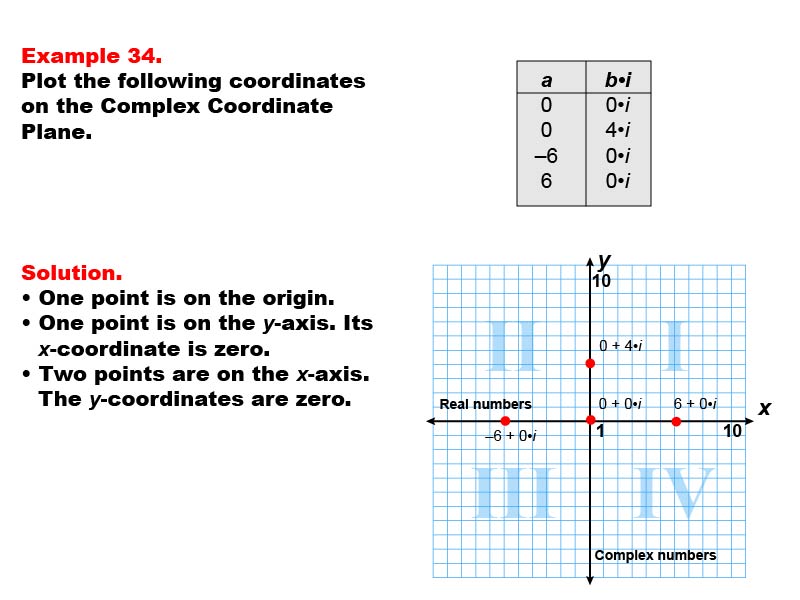
Display Title
Math Example--Coordinate Geometry--Coordinate Systems: Example 34
Display Title
Math Example--Coordinate Geometry--Coordinate Systems: Example 34

Topic
Geometry
Description
This example demonstrates plotting points on both the real and imaginary axes of the complex plane. The image displays four points: (0, 0) at the origin, (0, 4i) on the imaginary axis, and (-6, 0) and (6, 0) on the real axis. These points represent a mix of real, imaginary, and the complex origin on the complex plane.
Understanding how to plot points on both axes of the complex plane is crucial for developing a comprehensive grasp of complex number theory. This example helps students visualize the relationship between real and imaginary numbers within the complex plane, as well as the significance of the origin.
By providing examples of points on both axes and the origin, students can develop a deeper understanding of the structure of the complex plane. This approach reinforces the concept that the complex plane encompasses both real and imaginary numbers, with the origin serving as the point where these dimensions intersect.
Teacher's Script: Examine how these points are plotted on the complex plane. Notice we have points on both the real and imaginary axes, as well as the origin. Can you explain what each point represents in terms of complex numbers? Let's discuss the significance of having points on both axes and how this relates to our understanding of real, imaginary, and complex numbers. How does the origin (0, 0) relate to both the real and imaginary dimensions?
For a complete collection of math examples related to Coordinate Systems click on this link: Math Examples: Coordinate Systems Collection.
| Common Core Standards | CCSS.MATH.CONTENT.6.NS.C.8 |
|---|---|
| Grade Range | 6 - 8 |
| Curriculum Nodes |
Geometry • Coordinate Geometry • Coordinate Systems |
| Copyright Year | 2013 |
| Keywords | coordinate geometry, coordinate system, coordinate systems |